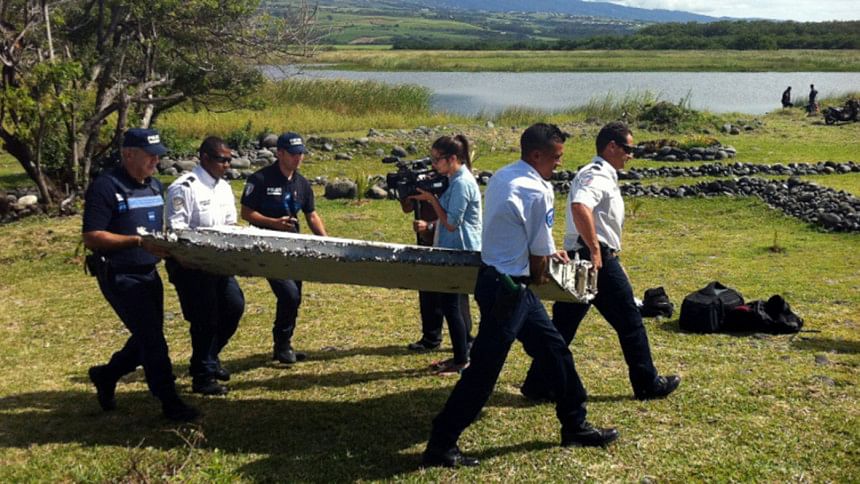France confirms wing part found on Reunion is from MH370

French prosecutors confirmed Thursday that a wing part found on a remote Indian Ocean island was from ill-fated Malaysia Airlines flight MH370, a month after tests on the flaperon began.
"It is possible today to say with certainty that the flaperon discovered on Reunion island on July 29 came from flight MH370," Paris prosecutors said in a statement, confirming claims made by Malaysia's prime minister last month.
The Boeing 777 disappeared on March 8 last year, inexplicably veering off course en route from Kuala Lumpur to Beijing with 239 people on board.
The disappearance turned into one of the biggest mysteries in the history of aviation, sparking a colossal hunt in the Indian Ocean based on satellite data which hinted at MH370's possible path.
In late July a man on Reunion island, a French overseas territory, found the two-metre-long (almost seven-foot) flaperon wing part washed up on a beach. It was then flown to France for tests by aviation experts.
Malaysian Prime Minister Najib Razak was quick to announce, in early August, that the piece of debris belonged to MH370, but French investigators were initially more cautious, saying only there was a "very high probability" it came from the plane.
In the statement Thursday, prosecutors said investigators discovered three numbers on the wing part, and later concluded that one of the figures corresponded to the serial number of a flaperon from the MH370.
The discovery of the flaperon, while confirming that the plane crashed into the ocean, has not shed any more light on the location of the crash.
It has also not brought investigators any closer to the crucial black box that could indicate what caused the mysterious disappearance that has baffled aviation experts and given rise to myriad conspiracy theories.
- Speculation over plane's fate -
Speculation on the cause of the plane's disappearance has focused primarily on a possible mechanical or structural failure, a hijacking or terror plot, or rogue pilot action.
Investigators believe the aircraft ran out of fuel and crashed somewhere in the southern Indian Ocean.
Malaysia's deputy transport minister Abdul Aziz Kaprawi said in August that investigators from his country would meet with those from China and Australia this month to "refine" the search for the MH370 after the discovery of the flaperon.
"Definitely, the search will continue in the same area," he said then.
The wing part also led to a wave of excitement over pieces of debris found elsewhere on the island as well as in the Maldives.
However, a 10-day air and sea search by France around Reunion for more debris turned up no new clues, and the Maldives items were found to have no links to any aircraft.
Australia has been leading the search for the plane, the largest multinational search operation in history.
More than 60,000 square kilometres (23,000 square miles) of the seafloor have been searched so far, with no trace of the missing Boeing 777 found until last month's discovery.
In April it was announced that the search area could be expanded up to 120,000 square kilometres if needed.

 For all latest news, follow The Daily Star's Google News channel.
For all latest news, follow The Daily Star's Google News channel. 



Comments